Posted on September 28th, 2022 by Mary Lord
 Teams of students in grades 7 to 9 follow the engineering design process to create, construct, test, and improve model solar sails made of aluminum foil to move cardboard tube satellites through “space” on a string. During the process, they learn about Newton’s laws of motion and the transfer of energy from wave energy to mechanical energy.
Teams of students in grades 7 to 9 follow the engineering design process to create, construct, test, and improve model solar sails made of aluminum foil to move cardboard tube satellites through “space” on a string. During the process, they learn about Newton’s laws of motion and the transfer of energy from wave energy to mechanical energy.
Read More
Filed under: Class Activities, Grades 6-8, Grades 6-8, Grades 9-12, Grades 9-12, Lesson Plans | Comments Off on Solar Sails: The Future of Space Travel
Tags: Aerospace, Class Activities, Design, energy transfer, Engineering Design Process, forces and motion, Grades 6-8, Grades 9-12, Lesson Plan, Newton, Newton's Laws, NGSS aligned activity, solar sails, space exploration, spacecraft, teachengineering
Posted on April 19th, 2022 by Mary Lord
 Kids love exploring the world around them, and Earth Day offers a great way to introduce them to environmental science and engineering. The following sampler includes activities, lessons, and resources that promote green engineering and science learning.
Kids love exploring the world around them, and Earth Day offers a great way to introduce them to environmental science and engineering. The following sampler includes activities, lessons, and resources that promote green engineering and science learning.
Read More
Filed under: Class Activities, Grades 6-8, Grades 9-12, Grades K-5, K-12 Outreach Programs, Lesson Plans, Special Features, Web Resources | Comments Off on Earth Day Resources
Tags: Class Activities, Curriculum, Earth Day, Energy, Engineering is Everywhere, Environmental Engineering, Environmental science, Green design, green roof, groundwater, Internet Resources, inventor, Lesson Plan, Lesson Plans, marine debris, NOAA, Ocean Cleanup, plastic, Pollution, Resources for Teachers, SENSE IT, Sustainability, Teacher Resources, Trash, vertical farming, Videos, waste, Web Resources, Wind Energy
Posted on April 18th, 2022 by Mary Lord
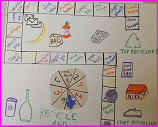 Students in grades 3-5 brainstorm ideas for board game formats. They then work in teams to design, create, and test games in which players must think of alternative uses (recycling) for used products.
Students in grades 3-5 brainstorm ideas for board game formats. They then work in teams to design, create, and test games in which players must think of alternative uses (recycling) for used products.
Read More
Filed under: Class Activities, Grades K-5, Lesson Plans | Comments Off on Design a Recycling Game
Tags: Class Activities, Curriculum, Engineering Design, Environmental Engineering, game, Grades K-5, Lesson Plan, Recycling, systainability
Posted on April 4th, 2022 by Mary Lord
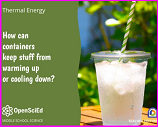 Having trouble finding quality materials to teach the open-ended investigations and crosscutting concepts envisioned by the Next Generation Science Standards? OpenSciEd has developed free, NGSS-aligned curricular units for middle schools (grades 6 to 8) along with teacher professional development.
Having trouble finding quality materials to teach the open-ended investigations and crosscutting concepts envisioned by the Next Generation Science Standards? OpenSciEd has developed free, NGSS-aligned curricular units for middle schools (grades 6 to 8) along with teacher professional development.
Read More
Filed under: For Teachers, Grades 6-8, K-12 Education News, Special Features, Web Resources | Comments Off on Free, Multidisciplinary NGSS Curricula
Tags: Education Week, f, Internet Resources, Lesson Plan, open educational resources aligned to NGSS, OpenSciEd, Resources for Teachers, STEM education, Teacher Resources, Web Resources
Posted on May 21st, 2021 by Mary Lord
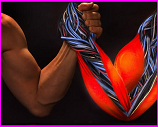 Students in grades 5 to 7 learn about how muscles work and follow the engineering design process to create their own biomedical device to aid in the recovery of a strained bicep. They discover the importance of rest to muscle recovery and that muscles (just like engineers!) work together to achieve a common goal.
Students in grades 5 to 7 learn about how muscles work and follow the engineering design process to create their own biomedical device to aid in the recovery of a strained bicep. They discover the importance of rest to muscle recovery and that muscles (just like engineers!) work together to achieve a common goal.
Image from NASA Jet Propulsion Lab
Read More
Filed under: Class Activities, Grades 6-8, Grades K-5, Lesson Plans | Comments Off on Build an Artificial Bicep
Tags: anatomy, biceps, biomechanical engineering, Biomedical Engineering, Class Activities, Grades 6-8, Grades K-5, Human Body, Lesson Plan, muscles
Posted on February 4th, 2021 by Mary Lord
 Students in grades 6-8 use their knowledge about how healthy heart valves function to design, construct, and implant prototype replacement mitral valves for hypothetical patients’ hearts. In the process, they discover the pros and cons of different types of artificial heart valves based on materials, surgery requirements, and lifespan.
Students in grades 6-8 use their knowledge about how healthy heart valves function to design, construct, and implant prototype replacement mitral valves for hypothetical patients’ hearts. In the process, they discover the pros and cons of different types of artificial heart valves based on materials, surgery requirements, and lifespan.
Read More
Filed under: Class Activities, Grades 6-8, Lesson Plans | Comments Off on Saving a Life: Heart Valve Replacement
Tags: Biomedical Engineering, Class Activities, Grades 6-8, heart valve, human physiology, Lesson Plan, teachengineering
Posted on June 19th, 2020 by Mary Lord
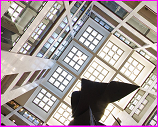 High school students explore the many ways that engineers provide natural lighting to interior spaces by analyzing various methods of daylighting and then constructing model houses from foam core board based on their observations and calculations of the optimal use of available “sunlight.”
High school students explore the many ways that engineers provide natural lighting to interior spaces by analyzing various methods of daylighting and then constructing model houses from foam core board based on their observations and calculations of the optimal use of available “sunlight.”
Hart Building atrium photo by the Architect of the Capitol
Read More
Filed under: Class Activities, Grades 9-12, Grades 9-12, Lesson Plans | Comments Off on Daylighting Design
Tags: architectural engineering, Architecture, Class Activities, daylighting, energy conservation, Engineering Design Process, Grades 9-12, Lesson Plan, lighting engineering, Solar Energy, solstice, windows
Posted on March 4th, 2020 by Mary Lord
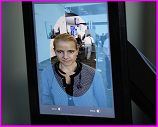 High school students analyze an assortment of popular inventions to determine their intended beneficiaries as well as who has access to, might be harmed by, and is profiting from them. They then develop and apply class standards for ethical design to re-imagine the devices in a way that would do more good for humanity.
High school students analyze an assortment of popular inventions to determine their intended beneficiaries as well as who has access to, might be harmed by, and is profiting from them. They then develop and apply class standards for ethical design to re-imagine the devices in a way that would do more good for humanity.
U.S. Customs and Border Protection photo of VeriScan facial recognition tablet at Dulles International airport by Glenn Fawcett
Read More
Filed under: Class Activities, Grades 9-12, Grades 9-12, Lesson Plans | Comments Off on Engineering Ethics: Evaluating Popular Inventions
Tags: Class Activities, design constraints, Drones, engineering ethics, genetic engineering, Grades 9-12, Lesson Plan, National Society of Professional Engineers, Presentations
Posted on February 6th, 2020 by Mary Lord
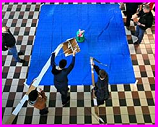 A classic engineering challenge involves designing and building devices that can deliver necessary goods to “Toxic Island,” an island that has been quarantined by the World Health Organization due to a nasty outbreak of disease. Working within specific constraints, including limited materials, middle school students follow the engineering design process to design, test, and improve a device that can deliver “medicine” and other vital supplies accurately and quickly without touching either the water or island.
A classic engineering challenge involves designing and building devices that can deliver necessary goods to “Toxic Island,” an island that has been quarantined by the World Health Organization due to a nasty outbreak of disease. Working within specific constraints, including limited materials, middle school students follow the engineering design process to design, test, and improve a device that can deliver “medicine” and other vital supplies accurately and quickly without touching either the water or island.
Read More
Filed under: Class Activities, Grades 9-12, Grades 9-12, Lesson Plans | Comments Off on Toxic Island: Design Devices to Deliver Goods
Tags: Biomedical Engineering, Class Activities, commerce, delivery, Design, engineering design challenge, Engineering Design Process, Grades 9-12, Lesson Plan, maker challenges, pandemic, public health
 Teams of students in grades 7 to 9 follow the engineering design process to create, construct, test, and improve model solar sails made of aluminum foil to move cardboard tube satellites through “space” on a string. During the process, they learn about Newton’s laws of motion and the transfer of energy from wave energy to mechanical energy.
Teams of students in grades 7 to 9 follow the engineering design process to create, construct, test, and improve model solar sails made of aluminum foil to move cardboard tube satellites through “space” on a string. During the process, they learn about Newton’s laws of motion and the transfer of energy from wave energy to mechanical energy. 








 Kids love exploring the world around them, and Earth Day offers a great way to introduce them to environmental science and engineering. The following sampler includes activities, lessons, and resources that promote green engineering and science learning.
Kids love exploring the world around them, and Earth Day offers a great way to introduce them to environmental science and engineering. The following sampler includes activities, lessons, and resources that promote green engineering and science learning. Students in grades 3-5 brainstorm ideas for board game formats. They then work in teams to design, create, and test games in which players must think of alternative uses (recycling) for used products.
Students in grades 3-5 brainstorm ideas for board game formats. They then work in teams to design, create, and test games in which players must think of alternative uses (recycling) for used products. Having trouble finding quality materials to teach the open-ended investigations and crosscutting concepts envisioned by the Next Generation Science Standards? OpenSciEd has developed free, NGSS-aligned curricular units for middle schools (grades 6 to 8) along with teacher professional development.
Having trouble finding quality materials to teach the open-ended investigations and crosscutting concepts envisioned by the Next Generation Science Standards? OpenSciEd has developed free, NGSS-aligned curricular units for middle schools (grades 6 to 8) along with teacher professional development.  Students in grades 5 to 7 learn about how muscles work and follow the engineering design process to create their own biomedical device to aid in the recovery of a strained bicep. They discover the importance of rest to muscle recovery and that muscles (just like engineers!) work together to achieve a common goal.
Students in grades 5 to 7 learn about how muscles work and follow the engineering design process to create their own biomedical device to aid in the recovery of a strained bicep. They discover the importance of rest to muscle recovery and that muscles (just like engineers!) work together to achieve a common goal. Students in grades 6-8 use their knowledge about how healthy heart valves function to design, construct, and implant prototype replacement mitral valves for hypothetical patients’ hearts. In the process, they discover the pros and cons of different types of artificial heart valves based on materials, surgery requirements, and lifespan.
Students in grades 6-8 use their knowledge about how healthy heart valves function to design, construct, and implant prototype replacement mitral valves for hypothetical patients’ hearts. In the process, they discover the pros and cons of different types of artificial heart valves based on materials, surgery requirements, and lifespan. High school students explore the many ways that engineers provide natural lighting to interior spaces by analyzing various methods of daylighting and then constructing model houses from foam core board based on their observations and calculations of the optimal use of available “sunlight.”
High school students explore the many ways that engineers provide natural lighting to interior spaces by analyzing various methods of daylighting and then constructing model houses from foam core board based on their observations and calculations of the optimal use of available “sunlight.” High school students analyze an assortment of popular inventions to determine their intended beneficiaries as well as who has access to, might be harmed by, and is profiting from them. They then develop and apply class standards for ethical design to re-imagine the devices in a way that would do more good for humanity.
High school students analyze an assortment of popular inventions to determine their intended beneficiaries as well as who has access to, might be harmed by, and is profiting from them. They then develop and apply class standards for ethical design to re-imagine the devices in a way that would do more good for humanity. A classic engineering challenge involves designing and building devices that can deliver necessary goods to “Toxic Island,” an island that has been quarantined by the World Health Organization due to a nasty outbreak of disease. Working within specific constraints, including limited materials, middle school students follow the engineering design process to design, test, and improve a device that can deliver “medicine” and other vital supplies accurately and quickly without touching either the water or island.
A classic engineering challenge involves designing and building devices that can deliver necessary goods to “Toxic Island,” an island that has been quarantined by the World Health Organization due to a nasty outbreak of disease. Working within specific constraints, including limited materials, middle school students follow the engineering design process to design, test, and improve a device that can deliver “medicine” and other vital supplies accurately and quickly without touching either the water or island.